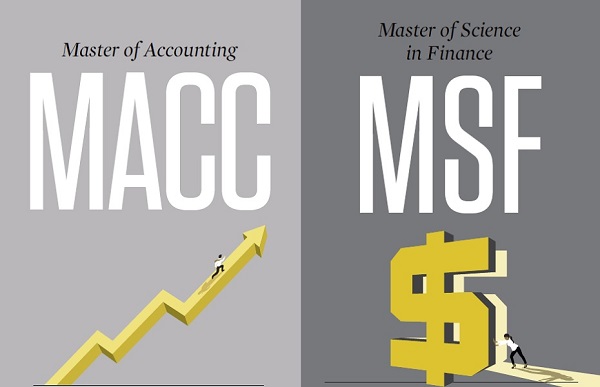
There are three types of financial statements: the Income statement, Balance sheet and Statement of Change in Equity. Each one of these financial statements contains useful information, but they do not all have the same value. Each one is different in the way it is used. Let's look at some examples of statements and how they can be used to help you understand your business. All of them provide useful information to aid in making better decisions.
Income statement
An income (or balance) sheet is one of the four major types of financial statements. It records the flow of funds into and out of the company. Another type, the consolidated balance sheet, details the company's assets, liabilities, and stockholders' equity, which represents the book value of the shares of stock held by shareholders. These three financial statements are useful for creditors and investors to understand the company's performance better and forecast its future.
The expenses section of an income statement includes them. These are the costs involved in providing goods and services. The cost per unit of goods sold (COGS), is a measure of the cost of labor and materials. General administrative costs do not relate to production but are essential to the company. The income statement also includes depreciation/amortization and any other costs that are related to the company's assets. Also called net income, or net profit, the total of these costs, and is what the company realizes in profits or losses.
Balance sheet
The balance is a basic financial statement of a company. It provides an overview of the assets and liabilities of the company to investors. An asset is the amount of cash that is available. Other liquid assets than cash include inventory and accounts receivable. Other types of assets, such equipment or inventory, may not be included in the balance sheet.
The balance is the most basic and must be reviewed first. This document describes the company's assets, liabilities, and financial position. Assets are listed according to the expected turnover. The first listing is for liabilities, while the current assets are next. Then fixed assets (e.g. a building) are listed. These assets are subtracted from the total amount for current assets. After that, the two-part division is done: current and longer-term. It is important to know the differences between these two when analysing a company's assets or liabilities.
Statement of equity change

The Statement of Change in Equity, a section in financial statements, reconciles the closing and opening balance sheets. The statement also explains the relationship between the income statement and balance sheet. It includes all transactions not recognized in an income statement. The following steps will help you prepare the Statement of Change in Equity. Ensure that all balances match and are accurate.
The statement of change to equity shows the changes in equity since the previous period. It also shows equity changes due to bonus payments, new monetary investment, holder withdrawals, or revisions in fixed asset values. Statement of Change in Equity aims to illustrate the relationships between income statement and balance sheet. This can be useful for stockholders as well as investors.
Notes to financial statements
The notes accompanying financial statements cannot be considered complete. The notes provide detailed information not included in the financial statements, such as revenue, payment terms, warranties, and other pertinent information. The notes are usually prepared on a "going-concern" basis. This assumes that the company will continue its operations and be able meet its obligations. However, the notes can include other details, such as the risks facing the company. Notes may also include information on future vulnerabilities.

The information in the notes to financial statements are critical for assessing the financial position of the company. Intangible assets are assets that are not physically tangible, such as trademarks and patents. These notes will also provide details on how the financial statements have been consolidated. This consolidation is used in order to verify the financial statements at all subsidiaries of a company. Footnotes explain how consolidation was accomplished. This helps to understand the financial performance of a company.
FAQ
Are accountants paid?
Yes, accountants usually get paid hourly rates.
For complex financial statements, some accountants may charge more.
Sometimes accountants may be hired to perform specific tasks. An accountant could be hired by a PR firm to prepare a report describing the client's performance.
What should I expect when hiring an accountant?
Ask questions about experience, qualifications and references before hiring an accountant.
You want someone who has done this before and knows what he/she is doing.
Ask them if they have any special skills or knowledge that would be helpful to you.
Be sure to establish a good reputation within the community.
What does an auditor do exactly?
Auditors look for inconsistencies within the financial statements with actual events.
He confirms the accuracy and completeness of the information provided by the company.
He also checks the validity of financial statements.
What kind of training is necessary to become a bookkeeper?
Basic math skills are necessary for bookkeepers. They need to be able to add, subtract, multiply, divide, fractions and percentages.
They will also need to be able use a computer.
Many bookkeepers have a highschool diploma. Some may even hold a college degree.
Statistics
- In fact, a TD Bank survey polled over 500 U.S. small business owners discovered that bookkeeping is their most hated, with the next most hated task falling a whopping 24% behind. (kpmgspark.com)
- Employment of accountants and auditors is projected to grow four percent through 2029, according to the BLS—a rate of growth that is about average for all occupations nationwide.1 (rasmussen.edu)
- The U.S. Bureau of Labor Statistics (BLS) projects an additional 96,000 positions for accountants and auditors between 2020 and 2030, representing job growth of 7%. (onlinemasters.ohio.edu)
- a little over 40% of accountants have earned a bachelor's degree. (yourfreecareertest.com)
- BooksTime makes sure your numbers are 100% accurate (bookstime.com)
External Links
How To
How to get a degree in accounting
Accounting is the art of keeping track and recording financial transactions. It can be used to record transactions between individuals and businesses. A bookkeeping record is called an "account". These data help accountants create reports to aid companies and organizations in making decisions.
There are two types: general (or corporate) and managerial accounting. General accounting is concerned with the measurement and reporting of business performance. Management accounting focuses on measuring, analyzing, and managing the resources of organizations.
An accounting bachelor's degree can help students become entry-level accountants. Graduates might also be able to choose to specialize, such as in auditing, taxation, finance or management.
For students interested in pursuing a career of accounting, they should be able to understand basic economic concepts such as supply/demand, cost-benefit analysis (MBT), marginal utility theory, consumer behavior and price elasticity of demand. They should also be able to understand macroeconomics, microeconomics and accounting principles as well as various accounting software packages.
A Master's degree in Accounting requires that students have successfully completed six semesters worth of college courses. These include Microeconomic Theory, Macroeconomic Theory. International Trade. Business Economics. Financial Management. Auditing Principles & Procedures. Accounting Information Systems. Cost Analysis. Taxation. Human Resource Management. Finance & Banking. Statistics. Mathematics. Computer Applications. English Language Skills. Graduate Level Examination must be passed by students. This examination is usually taken following three years of studies.
For certification as public accountants, candidates must have completed four years of undergraduate and four year of postgraduate education. Candidates must then take additional exams before they can apply for registration.